
The Next Best Thing To Being There No, Things Are Never What They Seem
[caption id="BeyondtheBookshelf_img1" align="alignright" width="291"]
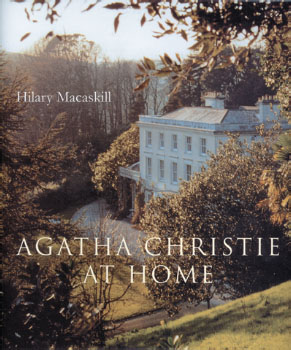
BOOK
Agatha Christie at Home
by Hilary Macaskill, Frances Lincoln Ltd., London, 144 pages, hardcover, &doller;40.
YOU MAY have read about Greenway House in the last issue of British Heritage. The opening of Agatha Christie’s favorite home to the public this past spring was one of the most exciting new openings by the National Trust in years. Unsurprisingly, the popularity of Greenway with visitors has proven instant. After all, Christie has legions of fans across the world.
Yes, it is well worth including Agatha Christie’s Torbay and her holiday home on the River Dart in an English travel itinerary. Realistically, though, most people will never have the opportunity to visit Greenway House and Agatha Christie’s world in person. Agatha Christie at Home is the next best thing.
First, Hilary Macaskill provides just the right amount of readable biography to let us see who Agatha Christie was behind her novels. The anecdotes and influence of her childhood and years as a young woman in Torquay and along the crescent of the English Riviera are lively and revealing. That Christie should have returned here to find her holiday home in 1939 is not unusual at all. That it should have been Greenway House seems positively inevitable.
Next, Macaskill opens the drawing room door upon decades of life at Greenway for Christie, her family and many friends. The cheerful Georgian manor house tucked away on a hillside above the river was perfect both for Christie’s affable, expansive lifestyle and for the quiet removal of the pressure of daily life closer to London.
Finally, after being in Christie’s family for seven decades, Greenway House was made over to the National Trust, not as simply an English manor house, but as a bright avenue to the interesting, and, oh so English, woman whose tales have mesmerized the world. Macaskill tells the story of the makeover, from its elaborate gardens to the rebuilding and the retrofitting that the National Trust has to go through any time a property is opened to the public. It is a behind-the-scenes look at getting Greenway House ready for its “curtain up.”
The book is wonderfully illustrated with pictures of the Greenway estate today as well as photos of Christie and company through the years. A very fine selection of pictures illustrates both Christie’s early 20th-century girlhood in Torquay and the beauty and charm of Torbay enjoyed by visitors today.
[caption id="BeyondtheBookshelf_img2" align="aligncenter" width="1024"]
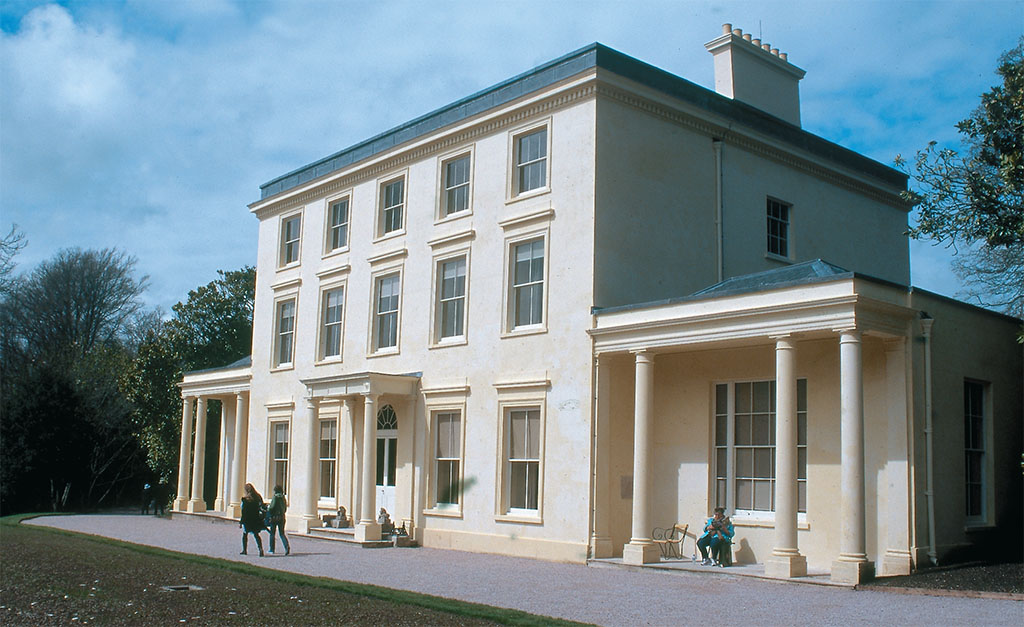
DVD
ParadisePostponed/Titmuss Regained,
5-disc boxed set, Acorn Media, Silver Springs, Md., app. 741 minutes, &doller;79.99.
[caption id="BeyondtheBookshelf_img3" align="alignright" width="157"]
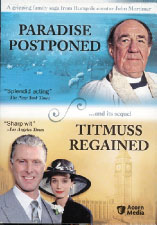
SOCIAL SATIRE, family drama and long-hidden secrets are the familiar métier of John Mortimer’s idiosyncratic and fecund imagination. The much-loved author of Rumpole of the Bailey turns his jaundiced eye on the village of Rapstone, and a setting that Jane Austen would love.
Eleven episodes of Paradise Postponed and three of its sequel, Titmuss Regained, tell the convoluted story of Leslie Titmuss, a working class lad who determinedly claws his way up the brittle English social ladder and power structure. But the story is not Titmuss’ alone. His success can be attributed at least in part to the personal interest taken in him by the kindly, slightly daft Reverend Simcox. On his death the old vicar inexplicably leaves his substantial personal fortune (the family brewery) to the ambitious but unloveable Titmuss—to the exclusion of his loyal wife and two sons.
Michael Hordern is brilliantly cast as Simeon Simcox, the idealistic vicar with the mystery. David Threlfall plays Titmuss. They are joined by a stellar ensemble that includes Zoe Wanamaker, Peter Egan and Kristin Scott Thomas.
Mortimer puts a twist in this story. While Rapstone is replete with the kind of stock country characters that we instinctively adore, the “hero” in this case is not among them. The rags-to-riches story of an awkward working class village lad after World War II rising to become a cabinet minister in the Thatcher administration generally would be an inspiring and sympathetic tale. Titmuss himself is smarmy and Machiavellian, however, and deliciously unlikable.
Rethinking the Glorious Revolution
BOOK
1688: The First Modern Revolution by Steve Pincus, Yale University Press, New Haven, 664 pages, hardcover, &doller;40.
[caption id="BeyondtheBookshelf_img4" align="alignright" width="202"]
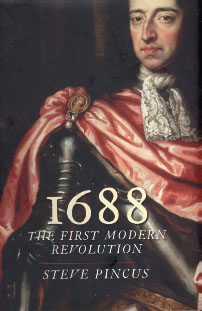
THE GLORIOUS Revolution that replaced the Catholic monarch James II with William of Orange and his wife, James’ daughter Mary, has long been dismissed as hardly a revolution at all. Called “Glorious” because it was orderly and supposedly nonviolent, the coup d’etat was, in fact, quite bloody. And, argues Yale historian Steve Pincus, the events of that autumn did indeed revolutionize Britain’s political economy, church and state apparatus.
After experiencing several years of James Stuart’s coercive and often violent attempts at the re-Catholicization of Britain, armed mobs rampaged through the streets of London during the long autumn and winter of 1688, plundering, burning and destroying Catholic chapels and properties belonging to prominent Catholics. Nor was the unleashed furor confined to the capital. Throughout the kingdom violence erupted against Catholics and the agents and symbols of the Jacobite government. Countless numbers died.
It was not, in fact, merely the destructive and bloody infuriation of the populace that gives the lie to the “glorious” reputation of 1688. Pincus paints a clear picture of a country and a society that changed rapidly through the 17th century. The dramatic rise of manufacturing, trade, literacy, urbanization, transport and wealth set the stage for a corresponding upheaval in the political life of the country.
History books at their best often put a new gloss on what we know and understand of history’s events and movements. In 1688, however, Steve Pincus has delivered a masterful reassessment of the received wisdom of what we understand of modern British history and the concept of revolution. This is a well-researched, well-written and important book.
DVD
Agatha Christie’s Poirot: The Movie Collection,
[caption id="BeyondtheBookshelf_img5" align="alignright" width="258"]
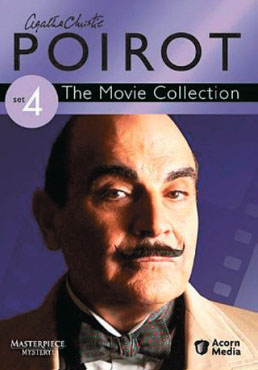
(set 4) 3-disc boxed set, Acorn Media, Silver Springs, Md., 2 movies, app. 186 minutes, &doller;49.99.
Grey Cells Redux
POIROT IS BACK! Fans of David Suchet as the inscrutable and fastidious Belgian detective, Hercule Poirot, can not fail to be delighted by his reappearance in these two new movies shown for the first time this summer on PBS Mystery.
While several notable actors have portrayed Poirot on screen over the years, critics and fans alike agree that David Suchet is the quintessential Poirot, portraying him most closely to the enigmatic sleuth Agatha Christie created almost 70 years ago.
Long-time followers of Poirot will miss such familiar recurring characters as Captain Hastings, Inspector Japp and Miss Lemon. Their absence, however, fails to diminish the enjoyment of these well-done adaptations.
Either Suchet’s Poirot is your cup or tea or it’s not. For those who are long-time fans of the series, though, or collectors for their personal library, this fourth Acorn series of Poirot adventures is well deserving of its place in the canon.
[caption id="BeyondtheBookshelf_img6" align="aligncenter" width="690"]
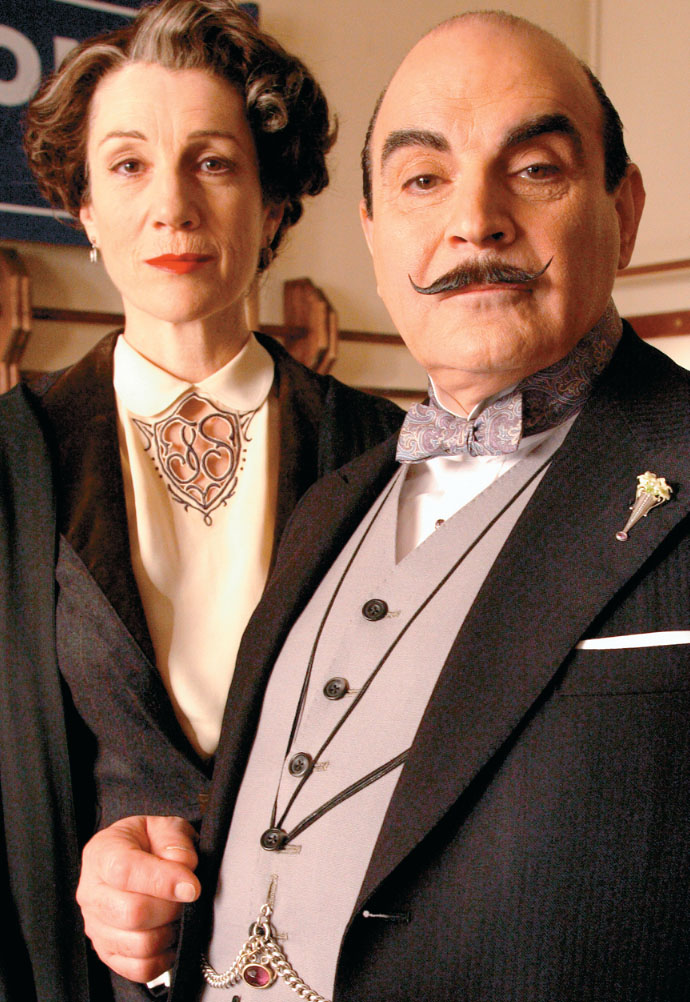
ACORN MEDIA





Comments